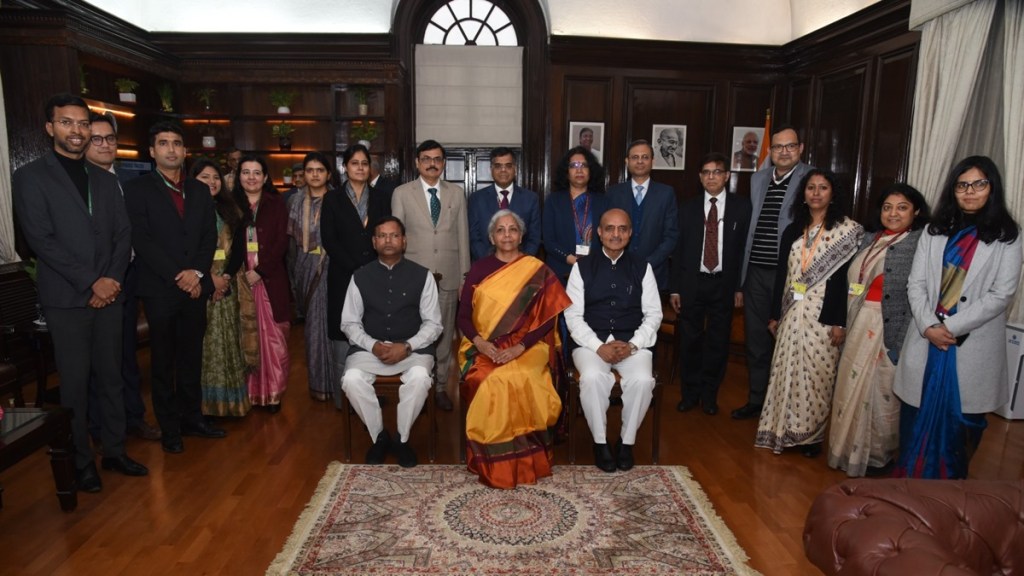By CA. Dr. Kirti Sharma and CA. Nitin Narang
An interim budget, unlike the comprehensive annual budget, is a short-term measure covering the fiscal year’s initial months. It outlines the government’s income and expenditure, enabling it to manage expenses until the formation of a new government post-elections.
As in the past, like any pre-election budget, the upcoming budget, being an Interim budget, is expected to be a populist one, with a few sectors which are expected to get a boost this year shall include EV, Fintech and Education sector, Automotive, Infrastructure. This would automatically help Financial Services majorly banks and Steel do better. The inclusive approach of the government, in line with its motto of – ‘Sabka Sath, Sabka Vikas, Sabka Vishwas’, the focus on some evergreen sectors like infrastructure, education, healthcare, agriculture augur well for inclusive growth. The budget of the ruling government before the elections, pleasing the vote bank and ushering development in the needed sectors could be the driving force in many announcements.
The ‘Make in India’ initiative which was launched globally in September 2014 as a part of India’s renewed focus on Manufacturing, with an objective of the initiative is to promote India as the most preferred global manufacturing destination (www.mea.gov.in). This campaign will be in limelight and domestic industry shall be given more impetus to grow. Protection and growth of MSMEs shall remain to be the priority of the government this year.
The Indian Government has been at the forefront in transforming India into the next level and is keen to embark on an exciting journey of technological transformation to the next level. This ambitious endeavor encompasses a multi-faceted approach, be it leveraging digital infrastructure, promoting domestic hardware manufacturing, and introducing crucial legislative measures like the Digital Personal Data Protection Bill. The mission also places a strong emphasis on high-impact research and forging meaningful technology partnerships. The promotion of centres of Excellence for Artificial Intelligence which were announced last year shall thus be on the agenda.
Though tackling the ongoing problem of creation of jobs through infrastructure projects has been the goal of the government in all these years, it may this year lay special emphasis on tourism and development of unexplored tourist places which hold potential. This would give boost to tourism, help inflow of more foreign exchange, create more jobs, give impetus to rail and air travel, and prevent outflow of foreign exchange. Real Estate as a sector, has not experienced any major push from the government in the last few years. Possible their lobbying with the government may bring some exciting news for them. Nevertheless, the boost to tourism will have a directly proportional impact of real estate as well.
Fintech performance has not been up to the mark so it is possible that some tax holidays may be granted and in order to achieve ‘Net-Zero’ Goals, few sops may be underway. For the education sector, not many changes were suggested last year in the existing framework in line with National Education Policy (‘NEP’). Since hundred percent FDI is allowed in the education sector, the budget may lay down some provisions for foreign universities and higher education institutions as well.
The FinMin should create venues for industry-academia connect to improve the quality of research in the country. It is the need of the hour – (i) as India needs to exhibit its research acumen to the rest of the world (ii) Research excellence can be one of the ways in which India can compete with the existing research hubs like China. If we want the manufacturing to be shifted to India, then at first research should be shifted.
Ayushman Bharat Pradhan Mantri Jan Arogya Yojana, a national public health insurance scheme of the Government of India that aims to provide free access to health insurance coverage for low-income earners in the country. Approximately, the bottom 50% of the country qualifies for this scheme. Thus, healthcare will be a sector where the government would want to invest as much as possible. Innovation and R&D in healthcare should definitely be given attention this year like the previous years, to achieve the dual purpose.
Under supply chain and e-commerce, the National Logistics Policy (‘NLP’), which was introduced last year, should be strengthened by promoting the adoption of EV infrastructure and green energy transition. It is expected that the government may pay some attention to air cargo logistics especially in the backdrop of the ongoing disturbances in Central World including Europe.
Coming to the direct tax regime for the individuals, the Middle class has usually been ignored as far as friendly budget announcements are concerned. With a good revenue collection till now, one can be hopeful that ‘no-negative’ changes are made in the existing tax structure for them. With the slabs remaining the same and the inflation rising, may be its time to re-visit the standard deduction and make it as a percentage of salary.
In the indirect tax regime, there are several sectors which have been demanding a reduction in the GST rates. It is possible that the government may look into these demands especially for the poor performing ones and find a solution. The co-working sector has already approached the government with this request. However, with the GST Counsil closely monitoring the ground level movements, the changes in this interim budget can be minimal.
To conclude, while budget 2023 announced the ‘Amrit kaal’ and conceptualized the ‘Saptarishi Goals’, Interim budget 2024 shall focus on digital transformation, inflation reduction and employment generation along with working towards the sustainable development goals. The emphasis on public-private partnerships to achieve the same could be high on agenda. In short, the government would aim consolidating India’s position in the global market amidst the socio-economic commotion globally.
CA. Dr. Kirti Sharm, Asstt. Professor, Great Lakes Institute of Management, Gurgaon
CA. Nitin Narang, Partner for International Tax and Transfer Pricing at Nangia & Co LLP

